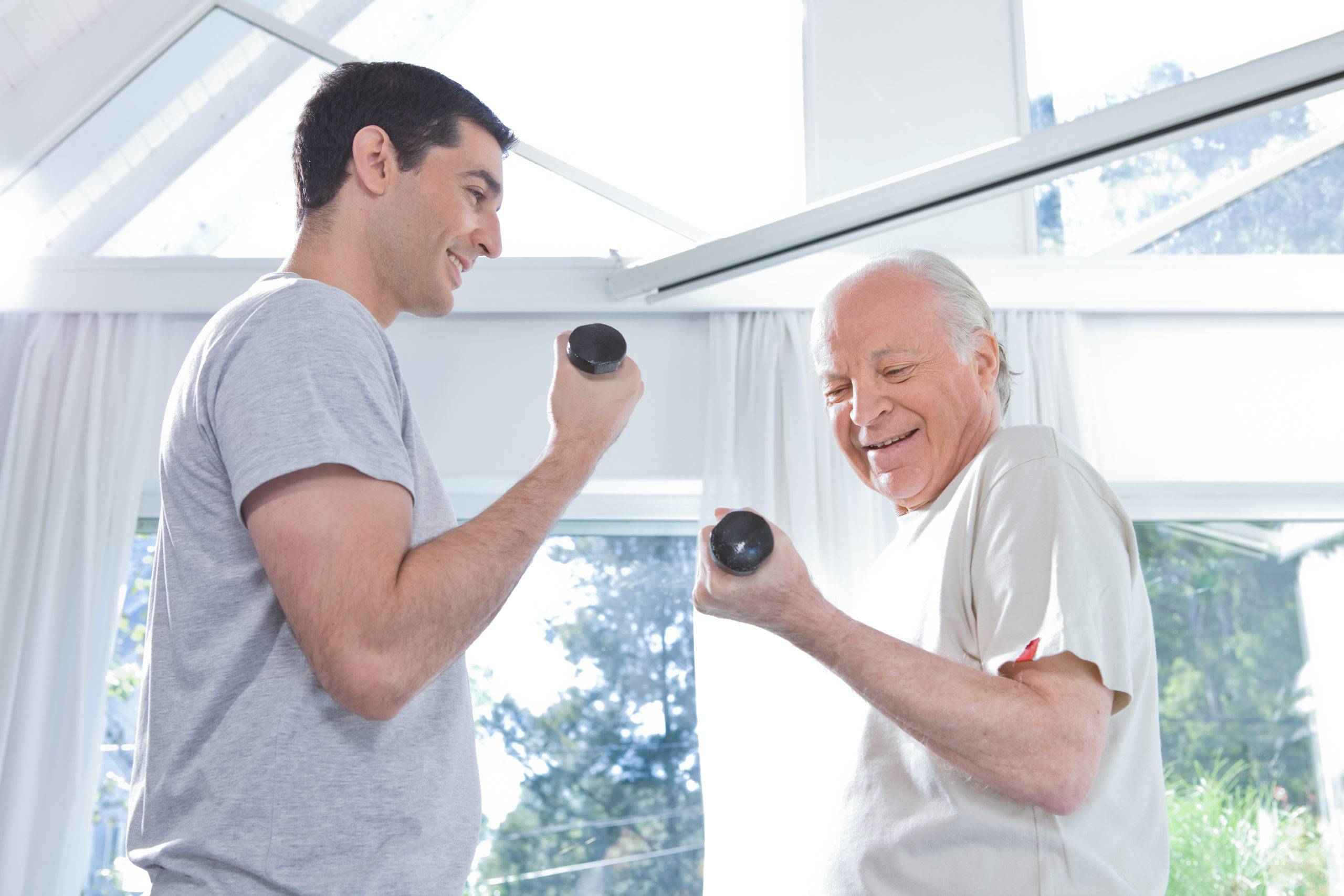Building healthy habits and maintaining an exercise routine is crucial for the health of both you as a caregiver, and the loved one in your care. Too often, caregivers put their own health aside and at risk, favoring instead to care for their loved one. But it doesn’t have to be an either-or scenario. In this article, we’re going to explore some healthy habits you can put in place to keep your loved one as healthy and active as possible that will have positive benefits for you as well.
Tips for Building and Maintaining Healthy Habits
It’s never too late to improve your loved one’s health. Healthy changes to your loved one’s diet and lifestyle can have a positive impact, even if they’ve never before been health-conscious.
- Meal-Prep and Plan Together.
If your loved one is aging or ailing, their digestive system may start to slow down or run into difficulties. Maintaining a healthy diet balanced with fruits, vegetables, whole grains, nuts seeds, vitamins, and nutrients is essential.
When digestion becomes difficult (which is common as we age), their diet may need to be catered to their condition. It may need to be either high or low fiber, include more neutral foods, focus more on healthy fats, etc. Your doctor may be able to advise on the best foods to add or remove from your loved one’s diet.
It can be difficult to find the time to make healthy choices and cook every single day. If that sounds like you, try setting aside one to two days a week to cook and prepare your meals in advance. Batch cooking staples (a big tray of roasted vegetables, several chicken breasts, a large helping of rice or pasta, etc.) and storing it in your fridge will make healthy eating the easiest option each day, making you more likely to eat it.
PRO TIP: Try cooking ingredients in bulk instead of entire meals so you have opportunities to mix and match or try new sauces. Pre-cooked plain pasta has more flavor potential (herbs and olive oil, marinara, mushroom cream sauce, etc.) than pasta that has already been sauced. - Schedule in Exercise Together.
As a caregiver, you may feel that you just don’t have time to exercise. For your loved one, exercise may not be a priority. The truth is, you can both benefit from exercise. This peer-reviewed study revealed that an average of nearly 1 in 10 deaths is caused in whole or in part by inactivity.
It’s easier for most of us to stick to an exercise routine if it’s scheduled into our day. By having it on the schedule, you’ll take away the daily internal debate of whether or not you should do it and will be more likely to get it done.
Exercise doesn’t need to be difficult or a chore. Find something you both enjoy and plan it for yourself.
PRO TIP: Walking is an incredibly underrated form of exercise. It can improve cardiovascular fitness, strengthen bones, muscles, and joints, and help to maintain or get to a healthy weight.
Other ideas for low-intensity exercise include Wii Sports games, low-intensity (or injury/disease/aging specific) yoga, or to head outside and tend to a garden. - Focus on Prevention.
Taking care of a loved one, as we’ve mentioned, makes it easier to ignore your needs in favor of theirs. One way to avoid caregiving having detrimental effects on your health is to focus on prevention – for both of you.
When you schedule an annual checkup for them, also schedule one for yourself. Schedule dentist visits every six months together. Plan an outing with your therapist while they are with theirs (if applicable).
It’s possible to keep your health up while looking after another’s.
Closing Thoughts
Keeping yourself healthy while looking after your loved one isn’t selfish, it’s essential. Building healthy habits and exercise routines that consider both of your health is a great way to bond, connect, and share experiences together.
If you feel overwhelmed or like you could use a bit of support, CRC is here for you. Eleven nonprofit Caregiver Resource Centers (CRCs) throughout the state of California each year serve hundreds of families and caregivers of adults affected by chronic health conditions. Click here to find your local center.
Share this post: